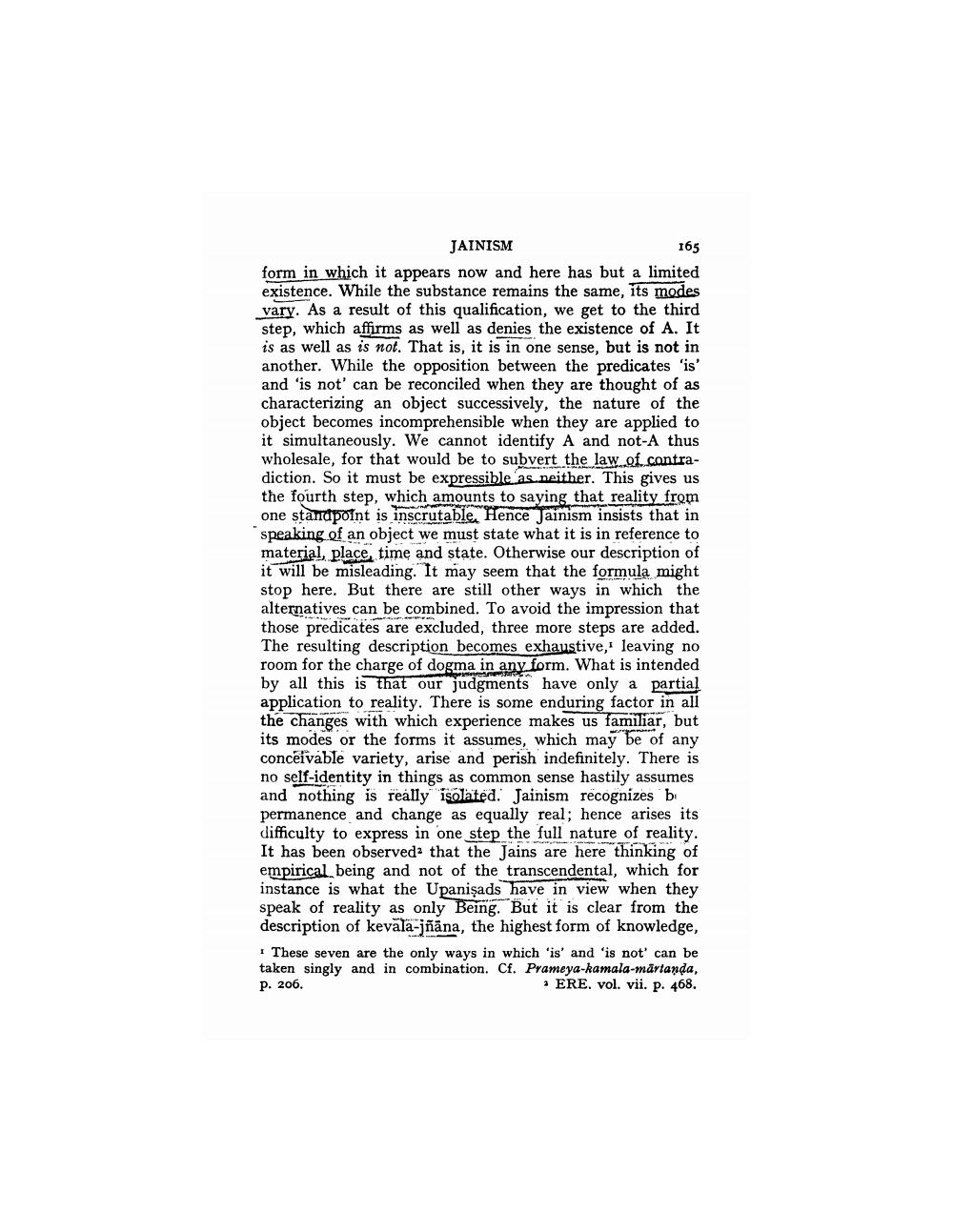________________
JAINISM
165 form in which it appears now and here has but a limited existence. While the substance remains the same, its modes vary. As a result of this qualification, we get to the third step, which affirms as well as denies the existence of A. It is as well as is not. That is, it is in one sense, but is not in another. While the opposition between the predicates 'is' and 'is not' can be reconciled when they are thought of as characterizing an object successively, the nature of the object becomes incomprehensible when they are applied to it simultaneously. We cannot identify A and not-A thus wholesale, for that would be to subvert the law..of contradiction. So it must be expressible as.neither. This gives us the fourth step, which amounts to saying that reality from one standpoint is inscrutable. Hence Jainism insists that in speaking of an object we must state what it is in reference to material, place, time and state. Otherwise our description of it will be misleading. It may seem that the formula might stop here. But there are still other ways in which the alternatives can be combined. To avoid the impression that those predicates are excluded, three more steps are added. The resulting description becomes exhaustive, leaving no room for the charge of dogma in any form. What is intended by all this is that our judgments have only a partial application to reality. There is some enduring factor in all the changes with which experience makes us familiar, but its modes or the forms it assumes, which may be of any conceivable variety, arise and perish indefinitely. There is no self-identity in things as common sense hastily assumes and nothing is really isolated. Jainism recognizes bi permanence and change as equally real; hence arises its difficulty to express in one step the full nature of reality. It has been observed that the Jains are here thinking of empirical being and not of the transcendental, which for instance is what the Upanişads have in view when they speak of reality as only Being. But it is clear from the description of kevala-jñāna, the highest form of knowledge, · These seven are the only ways in which 'is' and 'is not' can be taken singly and in combination. Cf. Prameya-kamala-martanda, P. 206.
· ERE. vol. vii. p. 468.




